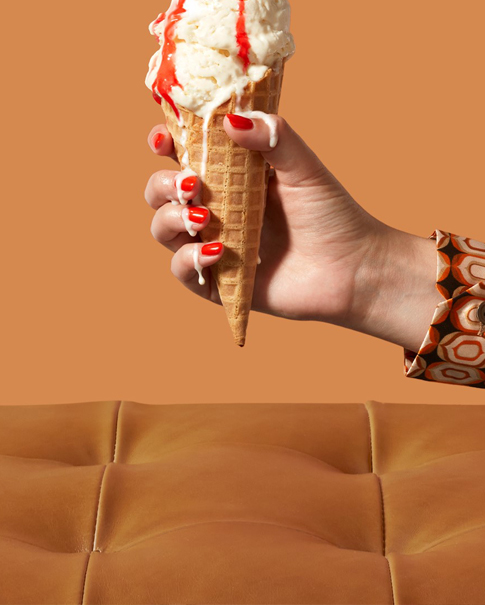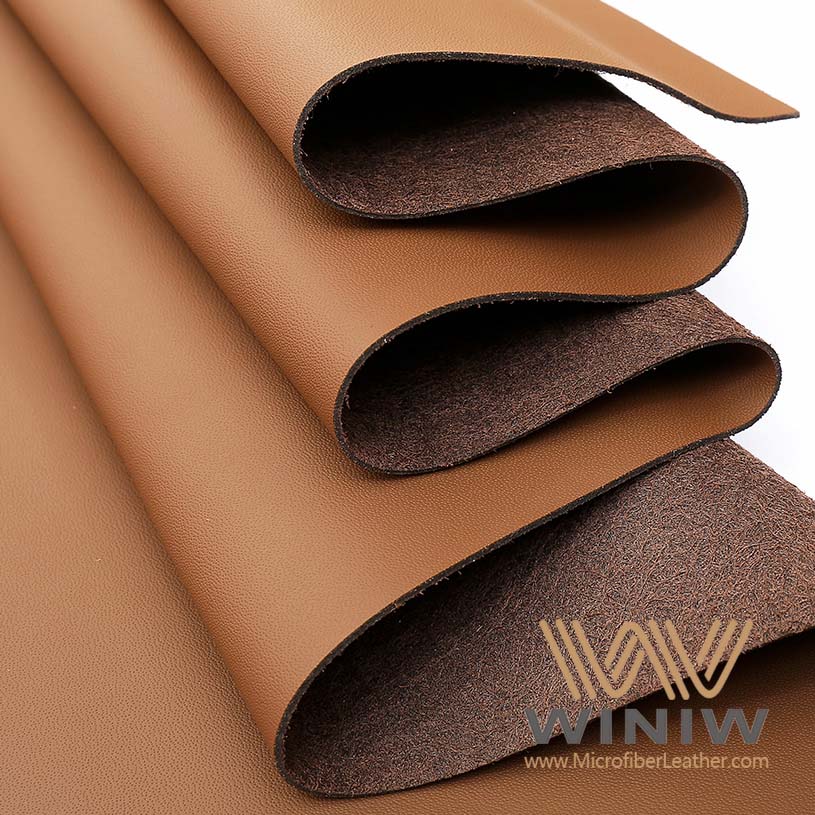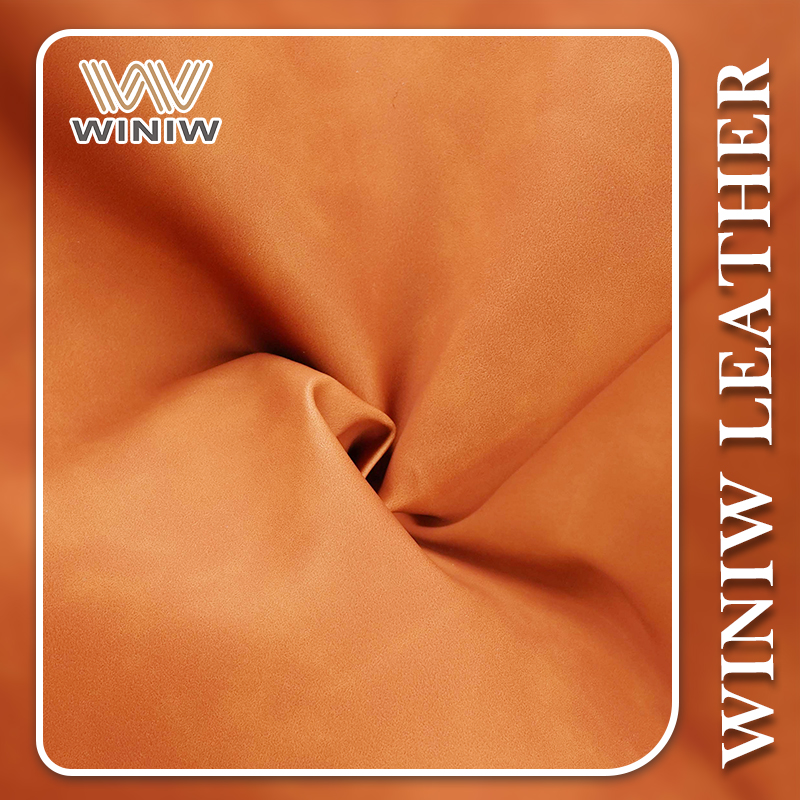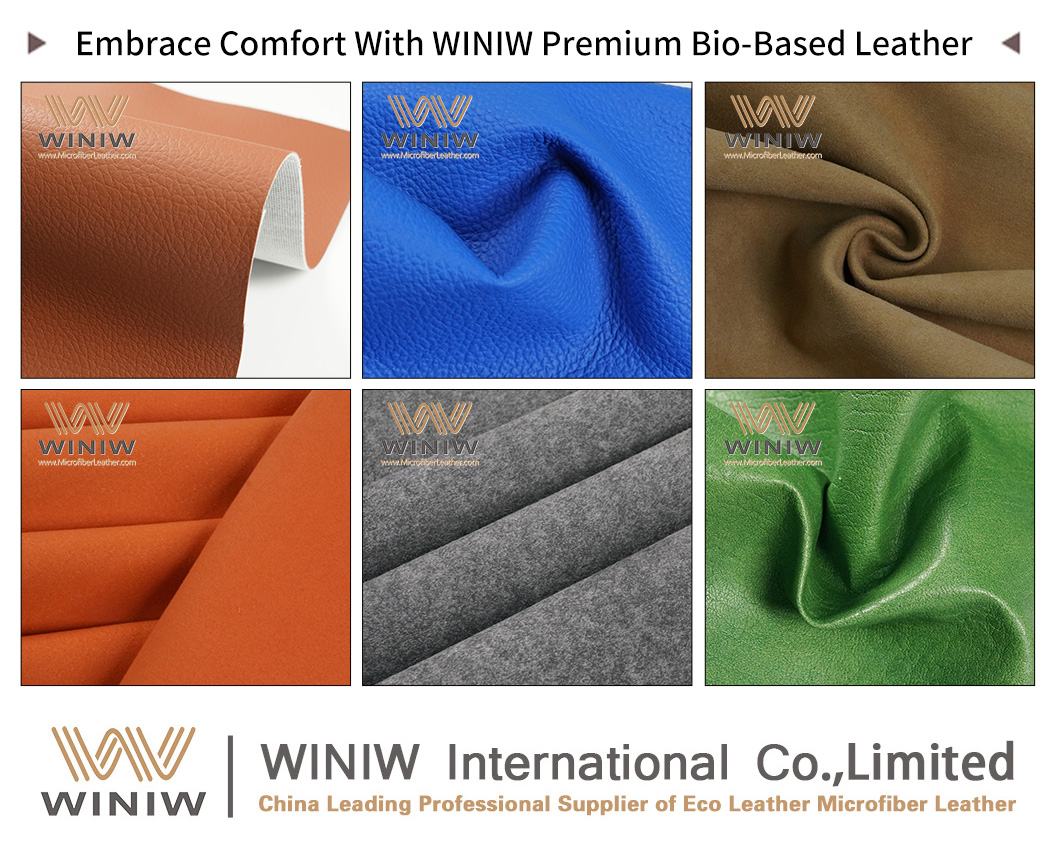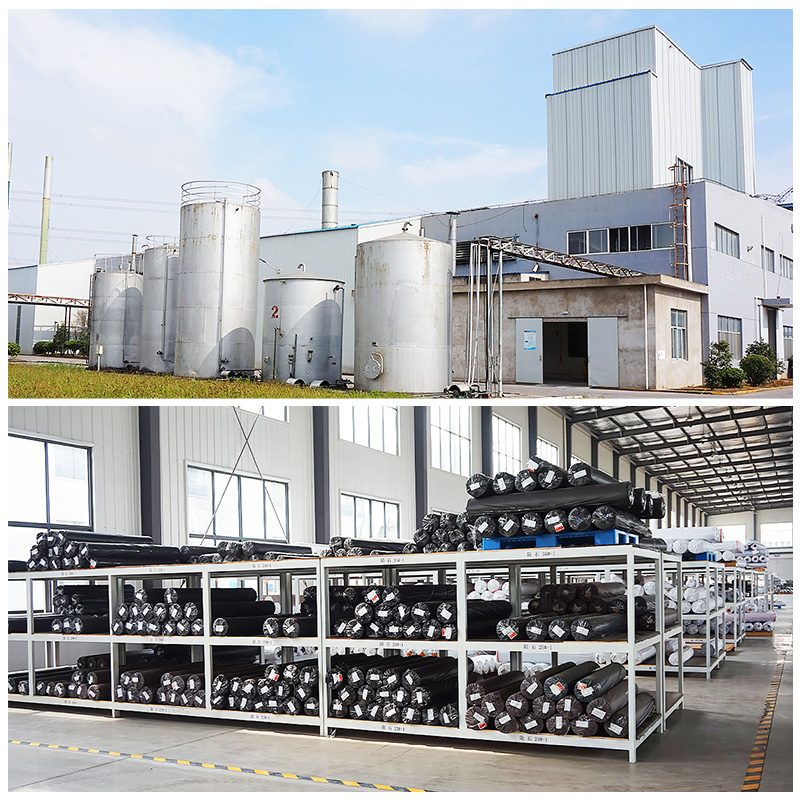Kunstleder vs. Echtleder: Was ist das Richtige für Sie?
Sep 02, 2025
Die Wahl zwischen Kunstleder und Echtleder hängt von Ihren persönlichen Vorlieben ab. Ich frage mich oft, ob Budget, Ethik, Haltbarkeit oder Stil meine Entscheidung beeinflussen sollten. Jedes Material bietet individuelle Vor- und Nachteile. Denken Sie beim Lesen an Ihre eigenen Vorlieben und Lebensstile. > Ihre Prioritäten bestimmen die beste Wahl für Sie.Die wichtigsten ErkenntnisseEchtes Leder hält viel länger als Kunstleder und bei richtiger Pflege oft über 20 Jahre.Kunstleder ist günstiger, hält aber normalerweise nur 5 bis 10 Jahre und ist daher die bessere Wahl für den kurzfristigen Gebrauch.Echtes Leder entwickelt mit der Zeit eine einzigartige Patina, die seine Schönheit und seinen Charakter verstärkt, während Kunstleder seine einheitliche Form behält.Komfort ist entscheidend; echtes Leder passt sich Ihrem Körper an und bietet eine individuelle Passform, während sich Kunstleder steif und weniger atmungsaktiv anfühlen kann.Kunstleder ist leichter zu reinigen und zu pflegen und erfordert im Vergleich zur anspruchsvolleren Pflege von echtem Leder weniger häufige Pflege.Betrachten Sie die Umweltauswirkungen; Echtes Leder ist biologisch abbaubar, hat aber einen höheren CO2-Fußabdruck, während für Kunstleder Kunststoffe verwendet werden, deren Zersetzung länger dauert.Ethische Überlegungen sind wichtig; Kunstleder bietet tierversuchsfreie Optionen und ist für alle attraktiv, denen das Wohl der Tiere am Herzen liegt.Denken Sie bei der Wahl zwischen den beiden über Ihre Prioritäten nach – Haltbarkeit, Kosten, Komfort und ethische Werte –, um das zu finden, was am besten zu Ihrem Lebensstil passt.Kunstleder vs. echtes LederMaterialübersichtWenn ich Kunstleder und echtes Leder vergleiche, schaue ich mir zunächst an, woraus jedes Material besteht. Echtes Leder wird aus Tierhäuten, meist Rindern, gewonnen und durchläuft einen Gerbprozess mit natürlichen Inhaltsstoffen. Die Hauptbestandteile von echtem Leder sind Tannine und Kollagen. Tannine tragen zur Konservierung der Haut bei, während Kollagen dem Material Festigkeit und Flexibilität verleiht.Kunstleder, auch Kunstleder oder synthetisches Leder genannt, besteht aus einer Mischung von Kunststoffen und Textilien. Hersteller verwenden PVC oder Polyurethan (PU) für die Außenschicht. Als Trägermaterial werden häufig Polyester, Baumwolle, Nylon oder Viskose verwendet. Diese Kombinationen verleihen Kunstleder seine Optik und Haptik, das Ergebnis unterscheidet sich jedoch von echtem Leder.Hier ist ein kurzer Vergleich der Hauptkomponenten:EchtlederkomponentenBeschreibungTannineNatürliche Verbindungen, die beim Gerben von Tierhäuten verwendet werden.KollagenDas primäre Protein in Tierhaut, das für Stärke und Haltbarkeit sorgt.KunstlederkomponentenBeschreibungPVCEine auf Erdöl basierende Kunststoffverbindung, die die äußere Schicht bildet und durch Weichmacher Flexibilität erreicht.PUEine komplexe Mischung aus Polyolen, Isocyanaten und Zusatzstoffen, die bei der Herstellung von Kunstleder verwendet wird.Mir fällt auf, dass die Arten von Kunstleder je nach Mischung von Kunststoffen und Stoffen variieren. Einige Produkte verwenden mehr PU, während andere auf PVC setzen. Auch die Arten von Echtleder unterscheiden sich: Vollnarbenleder, Top-Grain-Leder und Spaltleder bieten einzigartige Eigenschaften.HauptunterschiedeWenn ich Kunstleder mit echtem Leder vergleiche, fallen mir mehrere Unterschiede auf. Echtes Leder fühlt sich weich und geschmeidig an. Es passt sich mit der Zeit meiner Körperform an und ist daher auch bei längerem Tragen angenehm zu tragen. Echtes Leder ist widerstandsfähiger gegen Einstiche und Abrieb, hält daher länger und entwickelt mit der Zeit eine einzigartige Patina.Kunstleder ist tendenziell steifer und weniger atmungsaktiv. Ich finde, dass synthetisches Leder nicht die gleiche Flexibilität und den gleichen Komfort bietet. Zu den Nachteilen von Kunstleder gehört die Tendenz zum Reißen, Abblättern oder Reißen, insbesondere bei häufigem Gebrauch. Kunstleder ist oft nicht so strapazierfähig und robust wie echtes Leder.Materialexperten weisen darauf hin, dass echtes Leder ein natürliches Aussehen mit einzigartigen Unvollkommenheiten hat. Ich schätze die glatte und geschmeidige Textur sowie den angenehmen Duft, den echtes Leder verströmt. Kunstleder hingegen wirkt gleichmäßiger und es fehlt ihm an Authentizität. Seine Textur fühlt sich weniger edel an und es riecht manchmal nach Plastik.Hier sind die wichtigsten physischen und visuellen Unterschiede, die mir auffallen:Echtes Leder ist weich, flexibel und passt sich dem Körper des Benutzers an.Kunstleder ist steifer, weniger atmungsaktiv und weniger bequem.Echtes Leder ist widerstandsfähig gegen Einstiche und Abrieb.Kunstleder neigt eher zum Reißen, Abblättern und Zerreißen.Echtes Leder hat ein natürliches Aussehen mit Unvollkommenheiten.Kunstleder wirkt einheitlicher und es fehlt ihm an Authentizität.Echtes Leder verströmt einen angenehmen Duft.Kunstleder riecht oft nach Plastik.Ich berücksichtige diese Unterschiede immer, wenn ich zwischen Kunstleder und echtem Leder wähle. Die Arten von Kunstleder und echtem Leder bieten unterschiedliche Vorteile, aber die Wahl hängt davon ab, was mir am wichtigsten ist – Aussehen, Komfort, Haltbarkeit oder Kosten.Haltbarkeit Langlebigkeit aus echtem LederWenn ich in echtes Leder investiere, erwarte ich, dass es jahrelang hält. Die Haltbarkeit dieses Materials sticht unter allen Echtlederarten, die ich besitze, hervor. Vollnarben- und Top-Grain-Lederprodukte werden oft zu Familienerbstücken. Ich habe gesehen, wie Jacken und Taschen aus echtem Leder jahrzehntelang robust und attraktiv blieben. Die natürlichen Kollagenfasern in echtem Leder verleihen ihm eine beeindruckende Widerstandsfähigkeit gegen Kratzer und Einstiche. Mit der Zeit entwickelt das Material durch Sonneneinstrahlung und täglichen Gebrauch eine Patina, die als Schutzschicht dient und seine Haltbarkeit erhöht. Ich halte meine Lederwaren stets von Feuchtigkeit fern, um Schimmelbildung vorzubeugen. Die durchschnittliche Lebensdauer von echtem Leder übertrifft die von synthetischen Alternativen bei weitem.MaterialtypDurchschnittliche LebensdauerEchtes Leder10–30+ JahreKunstleder (Budget-PVC)2–3 JahreKunstleder (Standard-PU)3–5 JahreKunstleder (Premium PU)5–10 JahreKunstleder (Lederfaserstoff)1–2 JahreKunstlederbekleidungIch stelle fest, dass Kunstleder nicht mit der Langlebigkeit von echtem Leder mithalten kann. Die Qualität von Kunstleder beeinflusst seine Lebensdauer. Materialien von geringerer Qualität, wie z. B. billiges PVC oder Kunstleder, zeigen oft innerhalb weniger Jahre Abnutzungserscheinungen. Sogar Premium-PU-Optionen erreicht selten die Lebensdauer von echtem Leder. Ich habe häufige Probleme wie Risse, Abblättern und Verblassen beobachtet. Diese Probleme entstehen, weil Kunstleder nicht die Flexibilität und Festigkeit von Naturleder aufweist. Die Oberflächenschicht kann sich ablösen, insbesondere in stark beanspruchten Bereichen. Sonneneinstrahlung lässt die Farbe verblassen und das Material kann brüchig werden. Kunstleder ist weniger atmungsaktiv und behält seinen Glanz nicht lange. Ich finde, es ist anfällig für Einstiche und Risse, was seine Eignung für Alltagsgegenstände einschränkt.Art der AbnutzungBeschreibungKnackenKunstleder kann mit der Zeit aufgrund mangelnder Flexibilität Risse bekommen.PeelingInsbesondere bei minderwertigen Materialien kann es zu einem Ablösen der Oberflächenschicht kommen.FadingDie Farbe kann durch Sonneneinstrahlung und Abnutzung verblassen.Tipp: Die Haltbarkeit von Kunstleder hängt von der Qualität des Materials ab. Hochwertiges PU hält länger als billiges PVC oder Kunstlederfaserstoff.Patina und AlterungDer Alterungsprozess von echtem Leder fasziniert mich. Beim Tragen meiner Ledergeldbörse oder -jacke entwickelt die Oberfläche eine einzigartige Patina. Diese Veränderung von Farbe und Struktur erzählt eine persönliche Geschichte und verleiht dem Leder Charakter. Die Patina wirkt wie eine Schutzschicht und macht das Leder weicher und widerstandsfähiger. Ich schätze die Authentizität und Zeitlosigkeit, die gealtertes Leder mit sich bringt. Nur die stärksten Teile der Haut entwickeln diese Eigenschaft, was den wahrgenommenen Wert des Artikels steigert. Kunstleder entwickelt keine Patina. Es bleibt gleichmäßig und kann durch Alterung keine Geschichte erzählen. Stattdessen kann Kunstleder Falten oder Abnutzungserscheinungen aufweisen, was mit der Zeit an Attraktivität verliert.Echtes Leder entwickelt eine Patina, die die Haltbarkeit und Optik verbessert.Patina signalisiert hochwertiges Leder und trägt zu seiner Langlebigkeit bei.Kunstleder nimmt keine Feuchtigkeit auf und entwickelt keine Patina, was zu einer verringerten Haltbarkeit führen kann.Ich berücksichtige immer, wie meine Wahl altert. Echtes Leder wird mit der Zeit besser, während Kunstleder Abnutzungserscheinungen oft viel früher zeigt.KomfortAtmungsaktivitätWenn ich den Tragekomfort vergleiche, ist die Atmungsaktivität ein entscheidender Faktor. Mir fällt auf, dass echtes Leder einen leichten Feuchtigkeitsaustausch ermöglicht, wodurch meine Haut kühler und trockener bleibt. Kunstlederist dagegen nicht atmungsaktiv. Dieser Unterschied wird bei längerem Tragen, insbesondere bei warmem Wetter, deutlich. Ich habe oft das Gefühl, dass Artikel aus Kunstleder Wärme und Feuchtigkeit einschließen, was zu Unbehagen führen kann.Hier ist ein kurzer Blick auf die Leistung beider Materialien in Labortests:BesonderheitEchtes LederKunstleder (PU/PVC)AtmungsaktivitätLeichter FeuchtigkeitsaustauschKeinerDiese Tabelle zeigt, dass echtes Leder eine gewisse Atmungsaktivität bietet, Kunstleder hingegen nicht. Ich berücksichtige dies immer bei der Auswahl von Schuhen, Jacken oder Möbeln, die ich über einen längeren Zeitraum tragen möchte.Textur und HaptikTextur und Haptik spielen eine große Rolle für mein Komforterlebnis. Wenn ich echtes Leder berühre, spüre ich seine Weichheit und Flexibilität. Das Material fühlt sich luxuriös an und entwickelt mit zunehmendem Alter einen einzigartigen Charakter. Der Duft von echtem Leder trägt ebenfalls zum sensorischen Erlebnis bei und macht es authentischer und einladender.Kunstlederhat dagegen eine gleichmäßige Textur. Es fühlt sich oft synthetischer und weniger haltbar an. Ich finde, ihm fehlt die Wärme und Fülle von echtem Leder. Viele Verbraucher stimmen mir in diesem Punkt zu:Echtes Leder wird oft als weich, flexibel und luxuriös beschrieben und entwickelt mit der Zeit eine einzigartige Patina.Kunstleder hat eine gleichmäßige Textur, kann sich aber synthetischer anfühlen und weniger haltbar sein.Der Geruch von echtem Leder ist ein Unterscheidungsmerkmal, das Verbraucher schätzen und das bei Kunstleder nicht auftritt.Die meisten Produktbewertungen, die ich lese, bewerten die Textur und Haptik von echtem Leder höher als die von Kunstleder. Oft wird erwähnt, dass sich echtes Leder luxuriöser anfühlt und mit der Zeit einen einzigartigen Charakter entwickelt, während Kunstleder eher künstlich wirkt.Komfort im Laufe der ZeitLangfristiger Tragekomfort ist mir wichtig, insbesondere bei Alltagsgegenständen. Echtes Leder zeichnet sich dadurch aus, dass es sich meinem Körper anpasst und so eine individuelle Passform schafft. Ich merke, dass meine Lederschuhe und -jacken immer bequemer werden, je länger ich sie trage. Die weiche und geschmeidige Beschaffenheit von echtem Leder sorgt für unübertroffenen Tragekomfort.Kunstleder hingegen ist nicht so anpassungsfähig. Die mangelnde Atmungsaktivität kann insbesondere bei heißem Wetter unangenehm sein. Ich stelle oft fest, dass Kunstlederartikel steif bleiben und mit der Zeit nicht bequemer werden.Folgendes habe ich durch die langfristige Anwendung gelernt:Echtes Leder bietet aufgrund seiner weichen und geschmeidigen Beschaffenheit unübertroffenen Komfort und passt sich so den Füßen an, sodass eine individuelle Passform gewährleistet ist.Kunstleder ist im Allgemeinen weniger atmungsaktiv als echtes Leder, was insbesondere bei heißem Wetter zu Unbehagen führen kann.Tipp: Wenn Sie Wert auf einen mit der Zeit verbesserten Tragekomfort legen, ist Echtleder möglicherweise die bessere Wahl für Sie.AussehenVisuelle AttraktivitätWenn ich die Optik von echtem Leder und Kunstleder bewerte, fallen mir deutliche Unterschiede auf. Echtes Leder besticht durch seine natürliche Maserung und feine Unregelmäßigkeiten. Diese Merkmale verleihen jedem Artikel einen einzigartigen Charakter. Besonders Vollnarbenleder beeindruckt mich durch seine Strapazierfähigkeit und Schönheit. Narbenleder bietet eine glatte Oberfläche und ist besonders strapazierfähig, kostet aber in der Regel mehr als Kunstleder. Kunstleder hingegen besticht durch eine einheitliche, synthetische Optik. Ich sehe, dass es diejenigen anspricht, die Konsistenz in Textur und Farbe bevorzugen.Designexperten heben mehrere Faktoren hervor, die die visuelle Attraktivität beeinflussen:Vollnarbenleder zeigt natürliche Schönheit und Stärke.Narbenleder bietet eine edle, glatte Oberfläche.Kunstleder zieht Käufer mit ethischen und kostengünstigen Eigenschaften an, altert aber nicht wie echtes Leder.Ich vergleiche die beiden Materialien häufig anhand der folgenden Tabelle:BesonderheitEchtes LederKunstlederTexturNatürliche Textur mit einzigartiger MaserungEinheitliches und synthetisches ErscheinungsbildGeruchMarkantes erdiges AromaChemischer oder plastikartiger GeruchFlexibilitätDehnbar ohne zu reißenKann sich steif anfühlen und reißenWasseraufnahmeAbsorbiert WasserWasser perlt auf der Oberfläche abPatina vs. GleichmäßigkeitDie Art und Weise, wie sich jedes Material im Laufe der Zeit verändert, beeinflusst sein Aussehen. Ich habe beobachtet, wie echtes Leder mit dem Alter besser wird. Es entwickelt eine Patina, die Tiefe und Charakter verleiht. Pflanzlich gegerbtes Leder wird mit zunehmendem Alter schöner und erhält einzigartige Merkmale und eine satte Farbe. Kunstleder hat diese Eigenschaft nicht. Stattdessen sehe ich, wie es sich verschlechtert und Falten oder Kratzer entwickelt. Die Oberfläche bleibt gleichmäßig, aber Abnutzungserscheinungen werden deutlicher.Echtes Leder erhält eine Patina, die seine Schönheit und Individualität unterstreicht.Kunstleder behält sein einheitliches Aussehen, zeigt aber Abnutzungserscheinungen durch Falten und Kratzer.Hinweis: Wenn Sie Wert auf Gegenstände legen, die eine Geschichte erzählen und mit der Zeit attraktiver werden, ist Echtleder klar im Vorteil.StiloptionenIch erkunde gerne die Stilmöglichkeiten beider Materialien. Kunstleder zeichnet sich durch seine Vielfalt aus. Hersteller bieten es in vielen Farben, Ausführungen und Mustern an. Diese Flexibilität ermöglicht es mir, meinen persönlichen Stil zu treffen oder aktuellen Trends zu folgen. Kunstleder spricht diejenigen an, die nach Erschwinglichkeit und ethischen Entscheidungen suchen, insbesondere Veganer.Erschwinglichkeit: Kunstleder kostet weniger als echtes Leder.Ethische Wahl: Für Kunstleder werden keine tierischen Produkte verwendet.Vielfalt im Design: Kunstleder ist in einer großen Auswahl an Farben und Ausführungen erhältlich.Echtes Leder bietet klassischen Stil und zeitlose Ausstrahlung. Produkte aus echtem Leder zeichnen sich oft durch traditionelle Farben und Oberflächen aus. Ich finde, diese Artikel eignen sich für formelle Anlässe und professionelle Umgebungen. Kunstleder mit seinen kräftigen Farben und innovativen Designs passt sowohl zu lässigen als auch zu trendigen Looks.Tipp: Wählen Sie Kunstleder für ein starkes Stil-Statement oder aus ethischen Gründen. Wählen Sie echtes Leder für klassische Eleganz und dauerhafte Schönheit.WartungKunstleder reinigenIch finde, dass Reinigung von Kunstleder Die Reinigung ist unkompliziert. Normalerweise wische ich die Oberfläche mit einem weichen Tuch und einer Mischung aus milder Seife und Wasser ab. Diese Methode entfernt den größten Teil des Schmutzes, ohne das Material zu beschädigen. Ich vermeide aggressive Chemikalien, da diese die Oberfläche reißen oder abblättern lassen können. Kunstleder erfordert keine häufige Reinigung und Pflege. Ich reinige es nur, wenn ich sichtbaren Schmutz oder Flecken bemerke. Außerdem halte ich Kunstleder von direkter Sonneneinstrahlung fern, um ein Ausbleichen zu verhindern. Feuchtigkeit dringt nicht so leicht in die Oberfläche ein, daher mache ich mir keine großen Sorgen über Wasserschäden.Echtes Leder reinigenEchtes Leder erfordert mehr Pflege. Ich entstaube es mit einem feuchten Tuch und trage anschließend eine spezielle Lederpflege auf. Dadurch bleibt das Material geschmeidig und trocknet nicht aus. Echtes Leder reinige ich häufiger als Kunstleder, insbesondere wenn ich es täglich benutze. Ich vermeide es, das Leder einzuweichen oder Scheuermittel zu verwenden. Regelmäßige Pflege schützt die Oberfläche vor Rissen und erhält ihren natürlichen Glanz. Außerdem lagere ich Echtlederartikel kühl und trocken, um Schimmelbildung zu vermeiden.Hier ist ein kurzer Vergleich des Reinigungs- und Wartungsbedarfs:BesonderheitKunstlederEchtes LederReinigungsmethodeMilde Seife und WasserRegelmäßige KonditionierungWartungshäufigkeitWeniger häufigHäufigerSchutzbedarfMinimal (Feuchtigkeit und UV-Belastung)Hoch (Feuchtigkeit und UV-Belastung)Tipp: Ich teste jeden Reiniger immer zuerst an einer kleinen, versteckten Stelle, um unerwartete Schäden zu vermeiden.FleckenbeständigkeitFleckenresistenz spielt bei meiner Entscheidung eine große Rolle. Ich stelle fest, dass Kunstleder fleckenresistenter ist als echtes Leder. Alltägliche Verschüttungen wie Kaffee oder Saft lassen sich normalerweise spurlos abwischen. Echtes Leder hingegen, insbesondere unbehandeltes, saugt Flüssigkeiten schnell auf und kann dauerhafte Flecken bilden. Ich finde, dass eine schnelle Reinigung hilft, aber manche Flecken bleiben auf echtem Leder sichtbar.Kunstleder ist für seine schmutzabweisenden Eigenschaften bekannt und widersteht alltäglichen Flecken besser als unbehandeltes Echtleder.Wenn ich ein Material suche, das auch in unordentlichen Umgebungen oder häufigem Verschütten beständig ist, bietet Kunstleder einen praktischen Vorteil. Echtes Leder sieht zwar schön aus, benötigt aber besondere Pflege, um sein optimales Aussehen zu erhalten.UmweltauswirkungenFußabdruck aus KunstlederWenn ich an die Umweltauswirkungen denke, KunstlederIch konzentriere mich auf den CO2-Fußabdruck und den Produktionsprozess. Hersteller stellen Kunstleder aus synthetischen Materialien wie PVC und Polyurethan her. Diese Kunststoffe stammen aus fossilen Brennstoffen, was bedeutet, dass der Prozess auf nicht erneuerbaren Ressourcen basiert. Ich habe erfahren, dass der CO2-Fußabdruck von Kunstleder etwa 15,8 kg CO2e pro Quadratmeter beträgt. Diese Zahl ist viel niedriger als die Emissionen bei der Herstellung von echtem Leder.Der CO2-Fußabdruck von Rindsleder beträgt ungefähr 110,0 kg CO2e pro Quadratmeter.Kunstleder erzeugt etwa 15,8 kg CO2e pro Quadratmeter.Rindsleder hat eine fast siebenmal höhere Klimabelastung als Kunstleder.Obwohl Kunstleder weniger Energie verbraucht und weniger Treibhausgase ausstößt, bringt es andere Herausforderungen mit sich. Die Kunststoffe im Kunstleder zersetzen sich nur schwer. Produkte aus Kunstleder können Jahrzehnte brauchen, um sich zu zersetzen, was zu mehr Müll auf den Deponien führt. Mir ist auch aufgefallen, dass bei der Herstellung schädliche Chemikalien in die Umwelt gelangen können.Fußabdruck aus echtem LederEchtes Leder steht in einem komplexen Verhältnis zur Umwelt. Beim Gerben kommen Chemikalien zum Einsatz, die bei unsachgemäßer Handhabung Wasser und Boden verschmutzen können. Ich weiß, dass echtes Leder aus Tierhäuten gewonnen wird, die als Nebenprodukt der Fleischindustrie anfallen. Dieser Zusammenhang bedeutet, dass die Lederproduktion für die Umweltauswirkungen der Viehzucht mitverantwortlich ist. Der CO2-Fußabdruck von echtem Leder ist deutlich höher als der von Kunstleder. Der Prozess erzeugt erhebliche Treibhausgasemissionen, darunter auch Methan von Rindern.Echtes Leder zersetzt sich mit der Zeit auf natürliche Weise. Dadurch wird die Umweltbelastung auf Mülldeponien langfristig reduziert. Allerdings verursacht die Produktion mehr Umweltverschmutzung und verbraucht mehr Ressourcen als synthetische Alternativen. Wasserverbrauch, Chemikalienabfluss und Energieverbrauch tragen alle zum ökologischen Fußabdruck von echtem Leder bei.NachhaltigkeitIch vergleiche die Nachhaltigkeit von Kunstleder und echtem Leder oft anhand von Ressourcenverbrauch, Zersetzung sowie Umweltfreundlichkeit und Nachhaltigkeit. Die folgende Tabelle fasst die wichtigsten Herausforderungen für jedes Material zusammen:HerausforderungstypEchtes LederKunstlederRessourcennutzungNebenprodukt der Fleischindustrie, erneuerbarHergestellt aus nicht erneuerbaren Materialien wie KunststoffenUmwelt-FußabdruckNatürlich, biologisch abbaubarBedeutsam aufgrund der Nutzung fossiler Brennstoffe und UmweltverschmutzungMissverständnisseAufgrund seines Nebenprodukts als nachhaltig vermarktetOft fälschlicherweise als umweltfreundlich oder vegan vermarktetZersetzungszeitZersetzt sich auf natürliche WeiseDie Zersetzung dauert 10-mal länger als bei NaturlederTreibhausgasemissionenErzeugt jährlich 6,6 Millionen TonnenTrägt durch die Produktion zur globalen Erwärmung beiIch glaube, dass Nachhaltigkeit davon abhängt, wie jedes Material hergestellt und entsorgt wird. Echtes Leder ist biologisch abbaubar, verursacht aber bei seiner Herstellung mehr Emissionen. Kunstleder verbraucht bei der Herstellung weniger Ressourcen, aber seine lange Zersetzungszeit und die Verwendung von Kunststoffen schaden der Umwelt. Bei der Auswahl dieser Materialien wäge ich immer Umweltfreundlichkeit und Nachhaltigkeit ab.Hinweis: Kein Material ist perfekt für die Umwelt. Ich empfehle, den gesamten Lebenszyklus jedes Produkts zu berücksichtigen, bevor Sie eine Entscheidung treffen.Ethische ÜberlegungenTierschutzWenn ich die ethische Seite von Leder betrachte, ist der Tierschutz ein wichtiges Anliegen. Echtes Leder wird aus Tierhäuten gewonnen, daher denke ich immer darüber nach, wie die Tiere während des gesamten Prozesses behandelt werden. Tierschutzorganisationen bewerten die Lederindustrie anhand mehrerer wichtiger Phasen. Ich stelle fest, dass die Behandlung von Tieren auf Farmen, beim Transport und bei der Schlachtung je nach Region und lokalen Vorschriften stark variieren kann. Einige Länder setzen strenge Tierschutzstandards durch, während andere möglicherweise nicht das gleiche Maß an Kontrolle bieten.Hier ist eine Zusammenfassung, wie Tierschutzorganisationen die ethischen Auswirkungen der Echtlederproduktion bewerten:AspektBeschreibungAuf dem BauernhofTierschutzaspekte bei der Tierhaltung, beeinflusst durch regionale Praktiken und Bedingungen.Im TransportBedingungen und Behandlung der Tiere während des Transports, die je nach Region erheblich variieren können.Bei der SchlachtungEthische Implikationen und Praktiken am Schlachtort, die für das Tierwohl von entscheidender Bedeutung sind.Globale AbweichungenUnterschiede in der Landwirtschaft, im Transport und in den Schlachtmethoden zwischen den Regionen wirken sich auf das Wohlergehen der Tiere aus.Bildung und RessourcenInitiativen von Organisationen wie LWG, um ihre Mitglieder über das Tierwohl in der Lederlieferkette aufzuklären.Mir ist aufgefallen, dass einige Marken mit Organisationen wie der Leather Working Group (LWG) zusammenarbeiten, um Transparenz und Tierschutz in ihren Lieferketten zu verbessern. Die globale Lederindustrie steht jedoch weiterhin in der Kritik, weil sie inkonsistente Standards und mangelnde Rückverfolgbarkeit vorsieht. Für viele Menschen machen diese Bedenken echtes Leder aus ethischer Sicht weniger attraktiv.Tierversuchsfreie EntscheidungenAls jemand, der Wert auf ethisches Einkaufen legt, suche ich oft nach tierversuchsfreie Alternativen. Veganes Leder ist zu einer beliebten Wahl für diejenigen geworden, die tierische Produkte vermeiden möchten. Ich sehe immer mehr Marken, die vegane Lederoptionen anbieten, bei denen kein Tierleid auftritt. Diese Produkte verwenden synthetische oder pflanzliche Materialien, die mit veganen Werten übereinstimmen.Wenn ich veganes Leder kaufe, achte ich auf Zertifizierungen, die tierversuchsfreie Produktion garantieren. Zu den bekanntesten Zertifizierungen gehören:Global Organic Textile Standard (GOTS)Fair Trade-zertifiziertOEKO-TEX-zertifiziertMade Safe-zertifiziertZertifizierte B CorporationLeaping Bunny-zertifiziertBluesign-zertifiziertDiese Zertifizierungen helfen mir, Produkte zu identifizieren, die strengen ethischen und ökologischen Standards entsprechen. Ich stelle auch fest, dass veganes Leder spricht eine wachsende Zahl von Verbrauchern an, die sich für das Wohl der Tiere einsetzen und ihre Umweltbelastung reduzieren möchten. Viele vegane Marken betonen ihr Engagement für Transparenz und tierversuchsfreie Produktion.Für mich bedeutet die Wahl von veganem Leder, innovative Materialien und ethische Geschäftspraktiken zu unterstützen. Ich glaube, dass die zunehmende Zahl veganer Optionen die Modebranche ermutigt, sich humaneren und nachhaltigeren Lösungen zuzuwenden. Wenn Tierschutz oberste Priorität hat, bietet veganes Leder einen klaren Weg zu einem tierversuchsfreien Stil.KostenErschwinglichkeit von KunstlederWenn ich einkaufe für KunstlederprodukteDer Preisunterschied fällt mir sofort auf. Schuhe und Stiefel aus Kunstleder sind oft deutlich günstiger als echtes Leder. Die Hersteller verwenden synthetische Materialien, was die Produktionskosten senkt. Diese Einsparungen geben die Händler an die Verbraucher weiter. Kunstleder finde ich attraktiv, wenn ich meine Garderobe modernisieren möchte, ohne viel Geld auszugeben. Viele Marken bieten trendige Designs zu erschwinglichen Preisen an, sodass ich leicht mit neuen Stilen experimentieren kann.Ich sehe mehrere Gründe, warum Kunstleder erschwinglich bleibt:Die Herstellung synthetischer Materialien ist kostengünstiger.Massenproduktion senkt die Einzelhandelspreise.Der Wartungsbedarf bleibt minimal, sodass ich kein zusätzliches Geld für spezielle Reinigungs- oder Pflegemittel ausgebe.Tipp: Wenn ich eine preisgünstige Option für saisonale Mode oder den kurzfristigen Gebrauch benötige, sind Kunstlederschuhe und Kunstlederstiefel eine praktische Lösung.Mir ist jedoch bewusst, dass niedrigere Anschaffungskosten höhere Ersatzraten bedeuten können. Kunstleder hält in der Regel zwischen 5 und 10 Jahren. Ich tausche diese Artikel oft häufiger aus, insbesondere wenn ich Risse oder Abblättern bemerke. Für mich geht die Erschwinglichkeit mit einer kürzeren Lebensdauer einher.Wert von echtem LederWenn ich in echte Lederschuhe oder -stiefel investiere, erwarte ich Langlebigkeit und langfristigen Wert. Produkte aus echtem Leder erzielen zwar höhere Preise, aber ich sehe sie als Investition. Echtes Leder bietet überlegene Festigkeit und Widerstandsfähigkeit. Bei richtiger Pflege halten meine Echtlederschuhe seit Jahrzehnten. Ich schätze die Patina, die echtes Leder mit der Zeit entwickelt und ihm Charakter und Einzigartigkeit verleiht.Verbraucherberichte empfehlen durchweg echtes Leder aufgrund seiner Haltbarkeit und Langlebigkeit. Ich greife auf die folgende Tabelle zurück, um den langfristigen Wert beider Materialien zu vergleichen:BesonderheitKunstlederEchtes LederHaltbarkeit5-10 Jahre20+ JahreWartungNiedrigHochGesamtwertWeniger geeignet für langfristige InvestitionenEmpfohlen für Haltbarkeit und LanglebigkeitIch finde, dass echtes Leder mehr Pflege benötigt. Ich reinige und pflege meine Echtlederstiefel regelmäßig, um ihre Qualität zu erhalten. Obwohl ich mehr für Pflegeprodukte ausgebe, gleicht die längere Lebensdauer diese Kosten aus. Echtlederschuhe werden mit zunehmendem Alter oft bequemer und attraktiver, was ihren Wert steigert.Hinweis: Produkte aus echtem Leder gelten aufgrund ihrer höheren Haltbarkeit und Langlebigkeit im Allgemeinen als bessere langfristige Investition. Bei richtiger Pflege halten sie 20 Jahre oder länger, im Vergleich zu Kunstleder, das normalerweise etwa 5 bis 10 Jahre hält.Für mich hängt die Wahl von meinen Prioritäten ab. Wenn ich ein Produkt möchte, das den Test der Zeit besteht, bietet echtes Leder unübertroffenen Wert. Wenn ich Erschwinglichkeit und Vielfalt bevorzuge, erfüllt Kunstleder meine Anforderungen für den kurzfristigen Gebrauch.Echtleder vs. Kunstleder: VergleichstabelleNebeneinanderliegende ZusammenfassungWenn ich Echtleder mit Kunstleder vergleiche, hilft mir eine Übersicht, fundierte Entscheidungen zu treffen. Ich verwende oft eine Tabelle, um die Unterschiede und Gemeinsamkeiten zu visualisieren. So kann ich erkennen, welches Material am besten zu meinen Bedürfnissen passt.BesonderheitEchtes LederKunstlederMaterialquelleTierhautSynthetik (PU, PVC, Stoffrücken)Haltbarkeit20+ Jahre mit Pflege5–10 Jahre (Premium-PU)KomfortAtmungsaktiv, passt sich dem Körper anWeniger atmungsaktiv, bleibt steifAussehenEinzigartige Maserung, entwickelt PatinaEinheitliche Optik, keine PatinaWartungErfordert Konditionierung, sorgfältige ReinigungLeicht zu reinigen, weniger WartungFleckenbeständigkeitNimmt Flecken auf, erfordert schnelles HandelnFleckenabweisend, leicht abwischbarUmweltauswirkungenBiologisch abbaubar, hohe EmissionenGeringere Emissionen, langsamer AbbauEthische ÜberlegungenBedenken hinsichtlich des TierschutzesTierversuchsfreie, vegane OptionenKostenHöherer Vorab- und LangzeitwertErschwinglich, niedrigere AnschaffungskostenStiloptionenKlassische, limitierte FarbenGroße Auswahl, trendige DesignsHinweis: Ich überprüfe diese Tabelle immer vor dem Kauf Kunstleder Schuhe oder Kunstlederstiefel. Die Tabelle hilft mir, meine Prioritäten mit dem richtigen Material abzustimmen.Ich merke, dass echtes Leder bietet unübertroffene Langlebigkeit und Komfort. Das Material fühlt sich luxuriös an und passt zu meinem Lebensstil. Kunstleder bietet Erschwinglichkeit und ethische Vorteile. Ich sehe immer mehr Marken, die Kunstlederstiefel in kräftigen Farben und Mustern anbieten. Diese Optionen sprechen mich an, wenn ich mit Stil experimentieren möchte.Ich frage mich oft, welche Eigenschaften am wichtigsten sind. Möchte ich ein Produkt, das Jahrzehnte hält, wähle ich Echtleder. Bevorzuge ich pflegeleichte und tierversuchsfreie Produkte, tendiere ich zu Kunstleder. Die Vergleichstabelle gibt mir einen klaren Überblick und erleichtert mir die Entscheidung.Ich empfehle diese Zusammenfassung als schnelle Referenz. Sie hebt die Stärken und Schwächen der einzelnen Materialien hervor. Ich finde, die Tabelle vereinfacht die Debatte zwischen echtem und Kunstleder. Sie hilft mir, mich auf das zu konzentrieren, was mir am wichtigsten ist – sei es Haltbarkeit, Komfort, Ethik oder Kosten.EntscheidungshilfePassend zum LebensstilBei der Wahl zwischen Kunstleder und echtem Leder achte ich immer darauf, wie das jeweilige Material zu meinem Alltag passt. Mein Lebensstil bestimmt die beste Option für mich. Wenn ich etwas brauche, das Jahrzehnte hält, tendiere ich zu echtem Leder. Ich schätze seine Haltbarkeit und die einzigartige Patina, die es mit der Zeit entwickelt. Für Produkte, die stark beansprucht oder rauen Bedingungen ausgesetzt sind, ist echtes Leder die zuverlässige Wahl.Auf der anderen Seite, Kunstleder funktioniert gut für temporäre Gegenstände oder wenn ich mit neuen Stilen experimentieren möchte. Ich finde es einfacher zu reinigen und zu pflegen, was meinem vollen Terminkalender entgegenkommt. Wenn ich lieber etwas Budgetfreundliches kaufe, ist Kunstleder eine günstigere Option. Ich stelle auch fest, dass veganes Leder diejenigen anspricht, die tierversuchsfreie Produkte und ethische Alternativen wünschen.Hier sind die wichtigsten Faktoren, die ich für verschiedene Lebensstile berücksichtige:Kosten: Echtes Leder ist teurer, während Kunstleder preisgünstiger ist.Umweltauswirkungen: Echtes Leder ist biologisch abbaubar, hat aber einen gemischten Fußabdruck. Kunstleder ist synthetisch und nicht biologisch abbaubar.Pflege: Echtes Leder benötigt regelmäßige Pflege. Kunstleder lässt sich leichter reinigen.Haltbarkeit: Echtes Leder hält länger. Kunstleder ist besser für den kurzfristigen Gebrauch geeignet.Ethische Überlegungen: Kunstleder und veganes Leder sind frei von Tierquälerei.Werte priorisierenMeine persönlichen Werte spielen bei meiner Entscheidung eine große Rolle. Wenn mir Nachhaltigkeit am Herzen liegt, achte ich auf die Umweltauswirkungen jedes Materials. Ich weiß, dass die Produktion von Rindsleder 100,5 kg CO2 ausstößt und viel mehr Wasser verbraucht als synthetische AlternativenDie Lederproduktion trägt außerdem zu Treibhausgasemissionen, Wasserverschmutzung und Bodenerosion bei. Beim Gerbprozess kommen giftige Chemikalien zum Einsatz, die den Arbeitern und der Umwelt schaden können.Veganes Leder und Kunstleder bieten mir eine Möglichkeit, tierische Produkte zu vermeiden und ethische Bedenken zu reduzieren. Ich schätze es, dass vegane Optionen meinen Werten entsprechen, insbesondere wenn ich tierversuchsfreie Marken unterstützen möchte. Wenn mir Langlebigkeit und klassischer Stil wichtig sind, ziehe ich echtes Leder aufgrund seiner zeitlosen Anziehungskraft immer noch in Betracht.Tipp: Ich passe meinen Einkauf immer meinen Werten an, egal ob mir Nachhaltigkeit, Tierschutz oder langfristiges Investieren am Herzen liegen.SchlüsselfragenBevor ich Kunstleder, Echtleder oder vegane Lederprodukte kaufe, stelle ich mir ein paar wichtige Fragen. Diese helfen mir, eine sichere Entscheidung zu treffen:Wie hoch ist mein Budget?Wie lange soll das Material halten?Wird der Artikel starker Beanspruchung oder rauen Bedingungen ausgesetzt sein?Bevorzuge ich ein natürliches oder synthetisches Material?Ist veganes Leder oder Kunstleder für meine ethischen Ansprüche wichtig?Beeinflusst Nachhaltigkeit meine Wahl?Ich finde, dass die Beantwortung dieser Fragen mir hilft, das richtige Material für meine Bedürfnisse zu finden. Meine Prioritäten – seien es Kosten, Haltbarkeit, Ethik oder Stil – beeinflussen immer meine endgültige Entscheidung. Wenn ich Kunstleder und echtes Leder vergleiche, konzentriere ich mich auf das, was für meinen Lebensstil am wichtigsten ist.Der langfristige Wert Ihres Kaufs sollte vor allem berücksichtigt werden. Während viele Kunstlederarten attraktiv sind, weil sie sich leicht mit aggressiven Chemikalien reinigen lassen, reißt die laminierte Oberfläche oft schon nach wenigen Jahren. Echtes Leder hingegen hält nachweislich zehn Jahre oder länger. Echtes Leder ist tatsächlich beliebter. Echtes Leder fühlt sich einladend an, ist außergewöhnlich langlebig und die Qualität des Leders verbessert sich mit der Zeit. Echtes Leder ist atmungsaktiver, hat eine angenehme Haptik und wird mit der Zeit weicher, während Kunstleder eine plastische Oberfläche hat und sich recht künstlich anfühlt.Ich wäge diese Faktoren immer ab, bevor ich eine Entscheidung treffe:HaltbarkeitKomfortAussehenWartungUmweltauswirkungenEthische ÜberlegungenKostenWenn ich ein luxuriöses, langlebiges Material suche, wähle ich echtes Leder. Wenn mir Erschwinglichkeit und vegane Optionen wichtiger sind, ist Kunstleder die richtige Wahl für mich. Ich frage mich, wie oft ich den Artikel tragen werde, ob das Budget eine Rolle spielt und ob ethische Bedenken meine Wahl beeinflussen. Es gibt keine allgemeingültige Antwort – wähle, was sich für dich richtig anfühlt.Häufig gestellte FragenWas ist der Hauptunterschied zwischen Kunstleder und echtem Leder?Mir fällt auf, dass echtes Leder aus Tierhäuten gewonnen wird, während Kunstleder verwendet synthetische Materialien wie Polyurethan oder PVC. Echtes Leder fühlt sich natürlich an und altert gut. Kunstleder bietet ein einheitliches Aussehen und kostet weniger.Kann Kunstleder genauso lange halten wie echtes Leder?Ich habe festgestellt, dass Kunstleder in der Regel 5 bis 10 Jahre hält. Echtes Leder bleibt bei richtiger Pflege oft jahrzehntelang robust. Kunstleder kann früher reißen oder sich ablösen, insbesondere bei starker Beanspruchung.Ist Kunstleder leichter zu reinigen als echtes Leder?Kunstleder reinige ich mit milder Seife und Wasser. Der Vorgang ist schnell und einfach. Echtes Leder benötigt spezielle Pflegemittel und regelmäßige Wartung, um Austrocknen oder Risse zu vermeiden.Ist Echtleder immer teurer als Kunstleder?Ich sehe, dass Produkte aus echtem Leder im Voraus mehr kosten. Kunstleder bietet erschwingliche Optionen für die meisten Budgets. Der höhere Preis von echtem Leder spiegelt seine Haltbarkeit und Qualität wider.Ist Kunstleder eine gute Wahl für Veganer?Ich empfehle Kunstleder für Veganer. Es enthält keine tierischen Produkte. Viele Marken bieten vegan zertifiziertes Kunstleder an, das den Wert tierversuchsfreier Materialien unterstützt.Welches Material ist besser für die Umwelt?Ich berücksichtige den gesamten Lebenszyklus. Echtes Leder ist biologisch abbaubar, hat aber einen höheren CO2-Fußabdruck. Kunstleder verbraucht weniger Energie bei der Herstellung, besteht aber aus Kunststoffen, die sich nicht so schnell zersetzen.Wie erkenne ich, ob es sich bei einem Produkt um Echtleder oder Kunstleder handelt?Ich schaue zuerst auf das Etikett. Echtes Leder fühlt sich weich an und hat einen natürlichen Duft. Kunstleder sieht eintönig aus und kann nach Plastik riechen. Manchmal sehe ich auf Kunstleder ein eingeprägtes Narbenmuster.Tipp: Ich frage immer beim Händler nach, wenn ich mir bezüglich des Materials unsicher bin.
